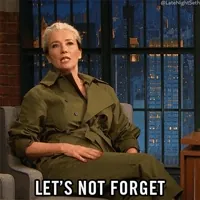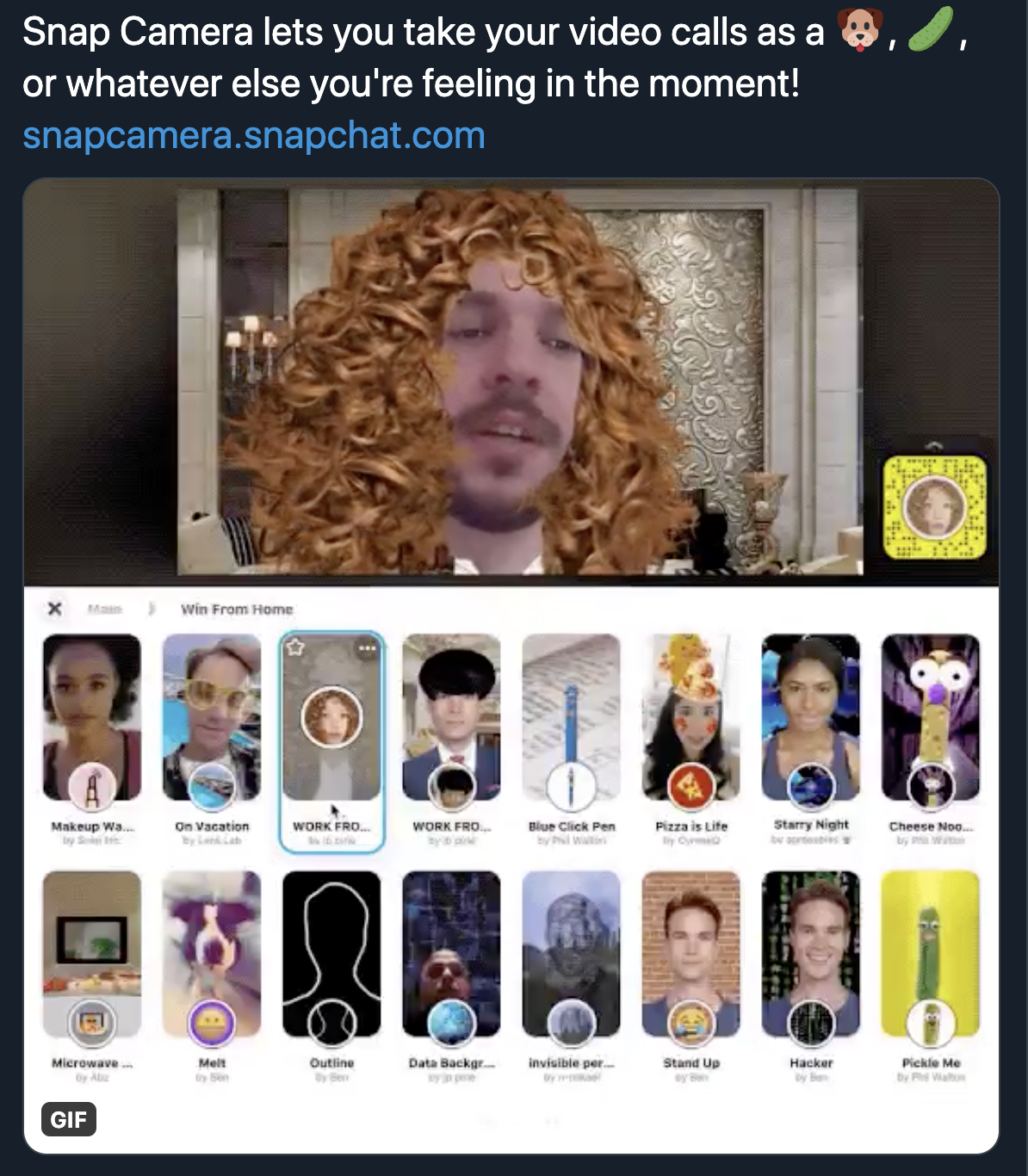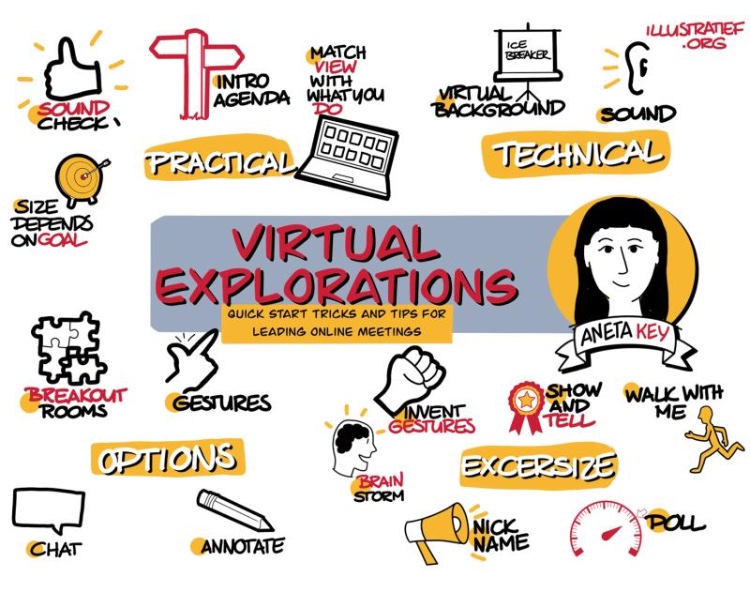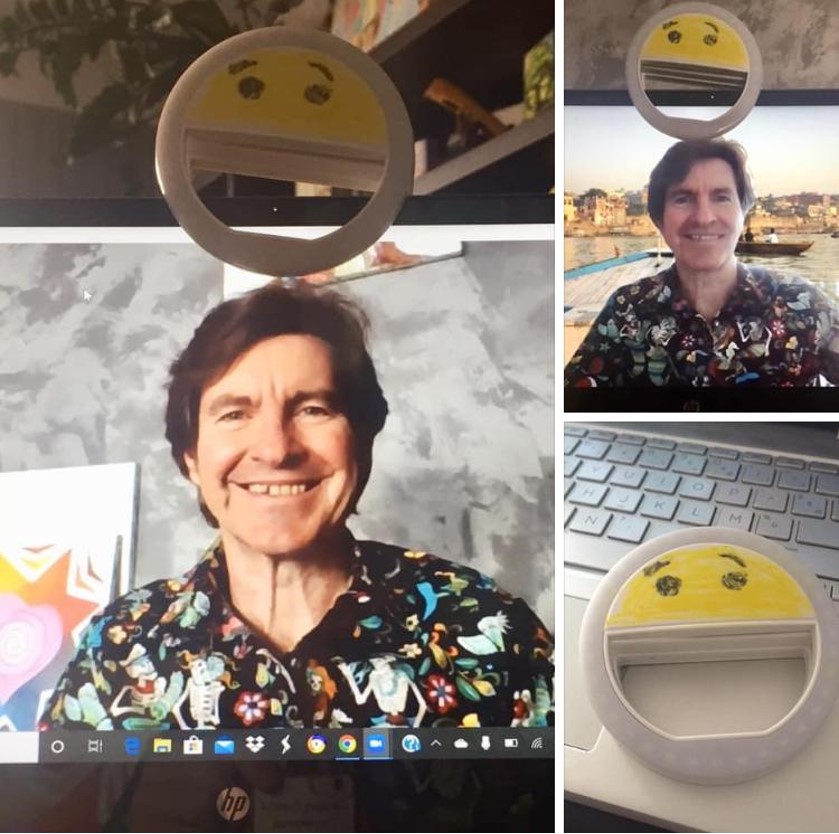Video conferencing is the New Normal, but Zoom calls are reportedly causing burnouts. It’s not always possible to limit online communication. But what if we could bring more energy and fun into video conferencing?
I asked the professional public speakers, my fellow Toastmasters, and a film-maker who has set up some of the biggest Hollywood celebrity video interviews on Skype to share their secrets.
Let’s discover their do’s and don’ts together.
1. Start with a Bang, End with a Bang
Too many online meetings are ho-hum because the speakers don’t make enough effort to share their energy with the audience.
It doesn’t always come naturally when everyone is separated by the screen.
Imagine Mel Robbins or Jim Carrey taking part in your online meeting. You would probably be anticipating hearing exciting things, some laughs, and good energy we associate with them.
That’s exactly what you, too, should bring to your meeting.
Mithun Mridha, an Intercultural Enthusiast and Global Leadership speaker, says that it is vital to keep your energy as a speaker to stay connected with audiences online.
He suggests doing some light physical warm-up before beginning the speech and focusing on your breath.
Here’re some of Mithun’s best practices on online conferencing:

2. Mind your Posture

Do you remember your mom telling you to “sit up straight’?
It turns out she was right!
My insightful mentor, a winning participant of several international Speech and Humorous Contests and Toastmaster since 1998, Nancy Norton, notes that Posture Matters even in the online context.
If you are seen flopped on your couch, you will be perceived as disengaged and not the sharpest tack in the box.
Sit with your back, not quite touching the back of a real chair, shoulders square and feet flat on the floor – especially when you are speaker.
Nancy Norton
3. Feelin’ good, lookin’ good, oughta be in Hollywood!
All energised, in the right posture, and ready to connect?
Let’s look deeper into how the technical side can help you stand out.
? CAMERA LENS
First things first, clean the camera lens!
The camera lens of your phone or your computer does get greasy or dusty or both. Don’t forget to clean it. You’ll have a much better image quality.
? FRAMING
In a video conference, you will appear much more engaged and present, if you are in frame with your head and the top of your shoulders dominate the screen.
To have a good framing, keep your camera a little bit above the eye-level. This angle helps to be in the frame and look nice.
?LIGHTING
Unless you have professional lighting, avoid sitting with your back to a big window. Backlighting can make it hard to see your face.
To make sure your face is well lit, place the light in front of you. Natural lighting and side lighting work great too. If you can’t change the backlighting, try to put another light to the side of your face.
?SOUND – PLAY IT SOFT (BUT SPEAK LOUD)
At the dawn of podcasting, a friend of mine stuffed his tiny bedroom with every blanket he could find in the house. All that to reduce echo and have a better sound.
Most of the laptops and phones we are using today provide us with good audio quality, yet playing it soft still works. The soft stuff helps to dampen the sound.
If you have a choice, place yourself in the room with a carpet.
? USE THE MIKE
If you have to move around, keep the mike close to your mouth.
? DRESS CODE
Not every online meeting has to be an equivalent of a virtual Burning Man or a Virtual Design Festival.
It’s generally acceptable not to wear Prada for every online video call you join. However, dressing up for a video call can raise your own opinion about yourself. You will feel more professional and confident. There is a connection between getting dressed for the day and your general mental state.
?COLORS
Wearing bright white can make your face appear darker.
Wearing something too dark if you are fair-skinned, can make your face overexposed.
Dark colors look great on camera on people with dark skin.
Ruby red, emerald green, and sapphire blue look good against most backgrounds.
? PATTERNS
Patterns like stripes or chevron can become distorted and dizzying on camera. They can also overpower your facial features.
Try pairing a printed shell with a solid sweater or blazer.
4. Spice it up with a Virtual Background
? CUSTOMISED BACKGROUNDS
If you are on Zoom, you can easily change your virtual background. You can find a few customised backgrounds to select from in the app, but you can also choose an image of your town or any personal image you like.
✅ DIY CHROMA KEY
DIY enthusiasts can look into creating a DIY green screen video effect (aka Chroma Key) on video calls and live streams.
? USE FILTERS

How about getting on a video call with dancing avocados, coach potatoes, or cosmic cats?! That’s precisely what Snap Camera is there for. Download it to your desktop and use with your video conferencing application.
It’s worth noting that Zoom, FaceTime, Microsoft Teams, and a few other video call apps offer their own filters and backgrounds.
Need inspiration for the backgrounds? Find great ideas in the Resources.
5. Create a WOW Factor
Remember how much fun it was to watch puppet shows on TV when you were little? Likewise, puppets and toys are a great way to animate a virtual video meeting.
David Martin, a professional speaker coach, founder of Speak the Rainbow, a TEDx speaker, and a stand-up comedian, used a teddy-bear to instantly create a good mood in one of our Toastmasters meetings.
At Toastmasters meetings, we give prepared speeches, participate in improvisation sessions, exchange feedback, and evaluations.
This time, our Go-To-meeting was jazzed up with stuffed bears and bunnies.
Imagine an oversized white Disney bunny or a cute teddy-bear cheerfully waving from the screen in a video conference! It’s an instant positivity boost.
Using fun objects helps to create a WOW factor not only at Toastmasters meetings. It’s a simple, low-tech way to make any video conference more interactive.
To get some extra inspiration on how to facilitate virtual video conferences in a business environment, follow David’s recommendation to check out the tips from Aneta Key.

6. Look at me!
Whether you run a webinar, give a speech, or answer the video interview questions, it is vital to look into the camera when you speak.
Behind the screens, there are people. They want to see your eyes!
Keeping eye contact helps to connect with your audience.
Regrettably, looking in the eyes of other meeting participants on the screen doesn’t help in a video conference.
To imitate eye-contact in an online conference environment, look right into the green light dot of your laptop or where the camera is.

Mithun Mridha suggests placing a Smiley sticker or visible reminder by the camera to remember to smile. A small photo of your children or your dog might do the trick. In the picture above, you can see how David Martin put this in action by transforming a cheap light ring with oil pastel.
Look into the dot, smile, and have prime video experiences as you speak to the world virtually!
Originally published at NataliaYurevich.com on April 21, 2020



